- 21 Oct 2024
- Open Access
IIS publications now in Open Access

Author
Wendy Robinson Editorial Project Co-ordinatorFollowing International Open Access Week 2024 (21-27 October), we take a look at what Open Access publishing means and why it is a growing trend.
Open Access (OA) publishing is underpinned by the ethical principle that knowledge and research should be available to as many people as possible, and that this brings its own manifold benefits. First and foremost, for readers it means that anyone with an internet connection can freely access research and scholarship that is no longer behind a paywall. It helps scholars to publish their work rapidly and for it to have a wider readership and greater impact as recognised through higher citations. It is also useful for academic libraries, which already have many demands on their budgets, and for whom digital publishing is becoming at least as important as printed books.
A brief history of Open Access
The idea of OA publishing arose in the late 1990s and early 2000s with the arrival of the internet and online publishing and was particularly popular in scholarly journals of the natural sciences. It was initially seen as a challenge to the restrictions of copyright law and the commercial interests of influential academic publishers who acted, to a certain extent, as gatekeepers of knowledge. About ten years ago it gained momentum as changes to government funding of universities in Europe and the US meant that research grants were increasingly conditional on publishing their output in OA. This was partly based on the idea that the taxpayers funding universities should not have to pay twice: both to fund research and then to read it. However, the idea really took off during the online boom of the COVID pandemic, as scientists realised that there was an urgent need for open international collaboration to understand the virus, and how to best treat patients and develop vaccines. In January 2024, the funding body UK Research and Innovation (UKRI) mandated OA publishing for any monographs that derive from national funding.
However, OA is not without its critics. There are those who argue that the author-processing charge (APC) typically paid for OA publishing can itself be an unfair and costly barrier that simply moves costs from reader to author, even if this is usually borne by a funding body such as the Arts and Humanities Research Council (AHRC), the scholar’s own institution, or a charity dedicated to supporting OA infrastructure, such as Knowledge Unlatched. There is also a concern that the idea of ‘pay to play’ can affect the quality of scholarship that gets published, while the overall quantity increases exponentially. This can mean it may become harder to identify truly excellent or ground-breaking research. Others argue that the huge amount of work that goes into reputable academic publishing, whether for peer-review, editing, production or marketing, needs to be acknowledged, valued and properly resourced, and that OA publishing does not always recognise this. Not to mention all the wider issues of inequitable internet access, and barriers such as energy shortages, that are more difficult to solve.
Open Access at IIS
In the Department of Academic Research and Publications (DARP) there has been a growing trend towards OA over the past few years across our range of publications. Some of these have been published as OA from the outset, others are earlier publications we have retrospectively transferred to OA. This represents a recognition of the diversity of our international readership and a broad commitment to digital and accessible publishing, while recognising that OA may not be appropriate for all IIS books.
By branching into OA, we remain mindful that the readers of IIS publications encompass both advanced academic research constituencies and the inquisitive minds of the global Ismaili community – a community that is always eager to learn more about its history and the varied expressions of its faith.
As the IIS continues to tentatively explore the way OA can fit within our publishing ecosystem, we invite you to take a look at the Open Access IIS Publications, to download and share them freely, and above all to read them.
Find our Open Access Publications
To access our Open Access publications, click the title below and the green “download or read online for free” text at the top of the description. Click the “Download” button under the search bar. This will give you a PDF copy of the book which you can read on your computer, tablet, phone, or eReader.
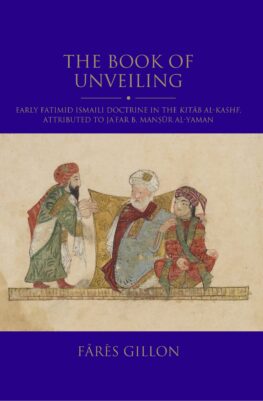
The Book of Unveiling: Early Fatimid Ismaili Doctrine in the Kitāb al-Kashf, attributed to Jaʿfar b. Manṣūr al-Yaman
The Kitāb al-Kashf is one of the earliest Ismaili texts to have reached the present day. Transmitted by the Ṭayyibī Ismaili tradition, it is composed of six treatises, most of which, as this open access study and first English translation argues, go back to the early years of the Fatimid rule.
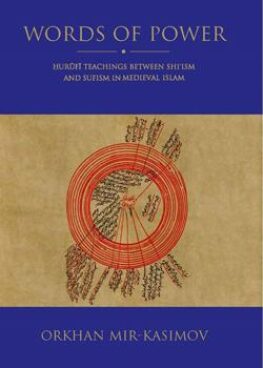
Words of Power: Ḥurūfī Teachings between Shiʿism and Sufism in Medieval Islam. The Original Doctrine of Faḍl Allāh Astarābādī
The Jāwidān-nāma-yi kabīr (‘Great Book of Eternity’) was the magnum opus of Faḍl Allāh Astarābādī (d. 796/1394) and provided the basis of the Ḥurūfī movement. Today it is one of the most important known texts belonging to the mystical and messianic current that became particularly active in Iran and Anatolia following the Mongol rule. It illuminates the contemporary reconfiguration of religious and political authority along messianic and charismatic lines that took place in the Islamic East, which arguably contributed to the rise and consolidation of the Ottoman, Safawid and Mughal dynasties.
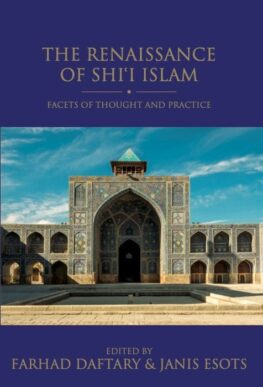
The Renaissance of Shiʿi Islam: Facets of Thought and Practice
The renaissance of Shiʿi Islam began in the 9th/15th century when the IsmailisAdherents of a branch of Shi’i Islam that considers Ismail, the eldest son of the Shi’i Imam Jaʿfar al-Ṣādiq (d. 765), as his successor. experienced the Anjudān revival and Twelver Shiʿi traditions were also renewed. This renaissance gained further strength when the SafavidsA major Shi’i dynasty which ruled Persia (1501-1732 CE), and was succeeded by the Afsharids. (See also Qizilbash, Safawiyya.) succeeded in establishing a state in the early decades of the 10th/16th century, making Ithnā ʿasharī Shiʿi Islam their official religion.
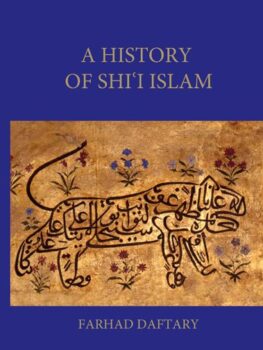
A History of Shiʿi Islam
The present book draws on the scattered findings of modern scholarship in the field, attempting to explain the formative era of Shiʿi Islam, when a multitude of Muslim groups and schools of thought were elaborating their doctrinal positions. Subsequent chapters are devoted to the history of the Ithnaʿasharis, or TwelversSee Ithna’asharis., the Ismailis, the Zaydis and the Nusayris (now more commonly known in Syria as the Alawis), the four communities that account for almost the entirety of the Shiʿi Muslim population of the world.
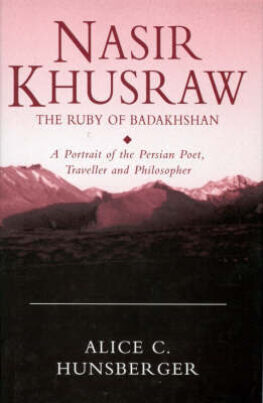
Nasir Khusraw, the Ruby of Badakhshan: A Portrait of the Persian Poet, Traveller and Philosopher
This is the first comprehensive study of Nasir Khusraw to appear in English. Structured around the progress of his journey, and drawing extensively on Nasir Khusraw’s own philosophical and poetic writings, it provides a highly readable and insightful account of this great scholar, sage and traveller. His writings, many of which are translated here for the first time, reveal a man of intense emotion and deep attitude to his faith, whose social awareness, cultural commitment to his homeland, and unstinting pursuit of excellence form the human backdrop to what was also a literary genius and a brilliant mind.
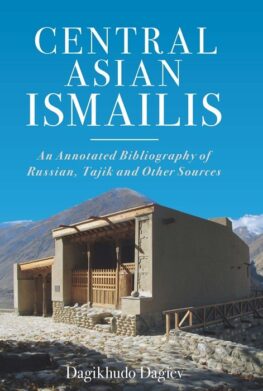
Central Asian Ismailis: An Annotated Bibliography of Russian, Tajik and Other Sources
The Ismaili Shi‘i Muslims of Central Asia have had a long and eventful history. This book presents a brief survey of their history and heritage and discusses how they have been understood in Russian, Soviet and Post-Soviet academic literature.
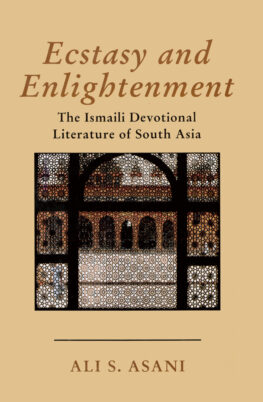
Ecstasy and Enlightenment: The Ismaili Devotional Literature of South Asia
Ecstasy and Enlightenment is a comprehensive examination of the devotional and mystical literature of the Nizari Ismailis in the Indian subcontinent. The book focuses on the ginans, a large corpus of hymns and poems composed in a variety of Indic languages and attributed to a series of preacher-saints who propagated Ismaili Islam in the subcontinent over several centuries.

Texts, Scribes and Transmission: Manuscript Cultures of the Ismaili Communities and Beyond
This open access volume brings together studies offering insights on different aspects of manuscript cultures nurtured by Ismaili communities until well after the widespread dissemination of printed books. The range of materials transmitted via these manuscripts in Arabic, Persian and Indic languages also reflects the doctrinal and literary preoccupations of Muslims at large and of other groups from the societies in which Ismailis lived. Hence, the manuscripts bear the imprint of their respective cultural contexts, namely a number of regions from the Near East to Central and South Asia.
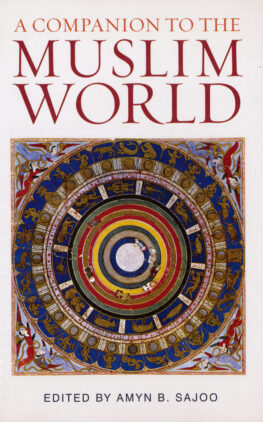
A Companion to the Muslim World: Expressions of the Civil Imagination
What is the extraordinary text that is the Quran – and how does it relate to the life and times of the Prophet Muhammad? How did a legacy so richly varied in faith, law and civilization emerge from the message of the Revelation that came to be called ‘Islam’ (or submission to God’s will)? This immaculately researched yet thoroughly accessible book offers a journey into the full range of experience – past and present, secular and sacred – of the diverse people and cultures of the Muslim world.
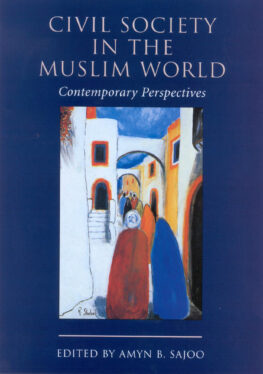
Civil Society in the Muslim World: Contemporary Perspectives
This landmark survey of social and intellectual trends in diverse Muslim contexts challenges many of the facile claims about the Muslim world today that abound in mainstream media as well as scholarly accounts. With contributions by Shirin Akiner, Mohammed Arkoun, Aziz Esmail, Tair Faradov, Abdou Filali-Ansari, Ersin Kalaycioglu, Iftikhar Malik, Ziba Mir-Hosseini, Olivier Roy and Amyn B. Sajoo, this volume will appeal not only to scholars of contemporary culture, politics and religion, but to all those interested in the unfolding of civil modernity in the new millennium.

The First Aga Khan: Memoirs of the 46th Ismaili Imam; A Persian edition and English translation of Muḥammad Ḥasan al-Ḥusaynī's ʿIbrat-afzā
The ʿIbrat-afzā was composed in the year 1850, following the Ismaili Imam’s departure from Persia and his permanent settlement in India. Here, the Aga KhanA title granted by the Shah of Persia to the then Ismaili Imam in 1818 and inherited by each of his successors to the Imamate. recounts his early life and political career as the governor of the province of Kirmān in Persia, and the dramatic events of his conflict with the Qājār establishment, followed by his subsequent travels and exploits in Afghanistan and British India. The ʿIbrat-afzā provides a rare instance of an autobiographical account from an Ismaili Imam and a first-hand perspective on the regional politics of the age.
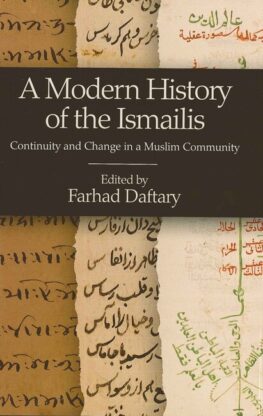
A Modern History of the Ismailis: Continuity and Change in a Muslim Community
This collection is the first scholarly attempt to survey the modern history of both Ismaili groupings since the middle of the 19th century. It covers a variety of topical issues and themes, such as the modernising policies of the Aga Khans, and also includes original studies of regional developments in Ismaili communities worldwide. The contributors focus too on how the Ismailis as a religious community have responded to the twin challenges of modernity and emigration to the West. A Modern History of the Ismailis will be welcomed as the most complete assessment yet published of the recent trajectory of this fascinating and influential Shi’i community.
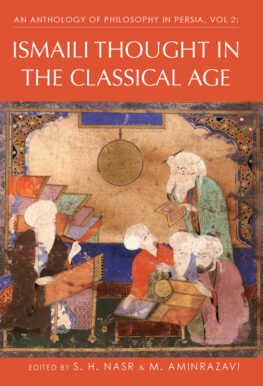
An Anthology of Philosophy in Persia, Vol. 2: Ismaili Thought in the Classical Age
For anyone interested in exploring, in all their varied manifestations, the fascinating philosophical traditions of Persia, such a wide-ranging and ambitious work will be an indispensable resource. Volume 2 covers five centuries of Ismaili philosophy, and includes extracts from outstanding Ismaili works including the Rasāʾil Ikhwān al-Ṣafaʾ (Treatises of the Brethren of Purity) and the philosophical odes of Nāṣir Khusraw.
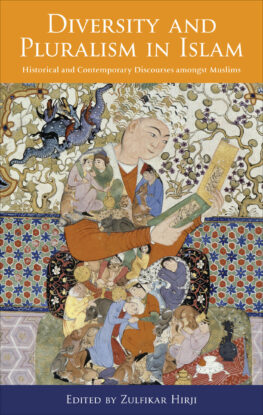
Diversity and Pluralism in Islam: Historical and Contemporary Discourses amongst Muslims
This volume explores the processes by which Muslims construct notions of the self, the other and community, and addresses the socio-cultural tools that they employ in so doing. Offering contributions by world-class scholars, Diversity and Pluralism in Islam applies insights from a range of disciplines, including anthropology, history, literature, political theory, comparative literature and Islamic studies.
